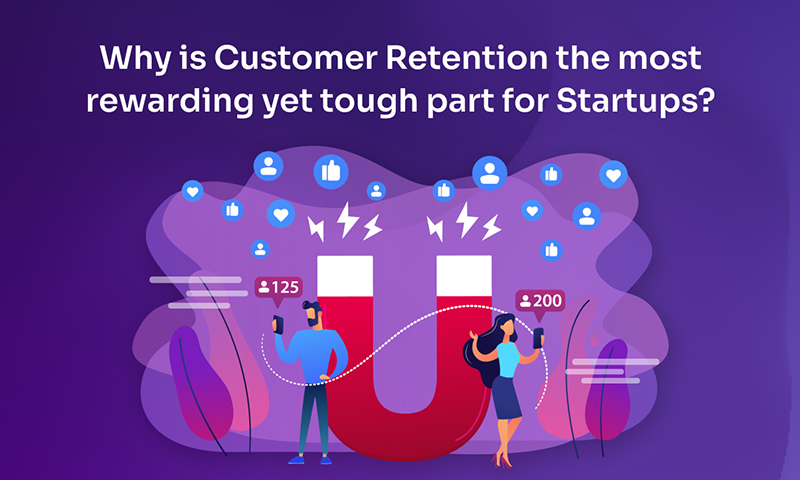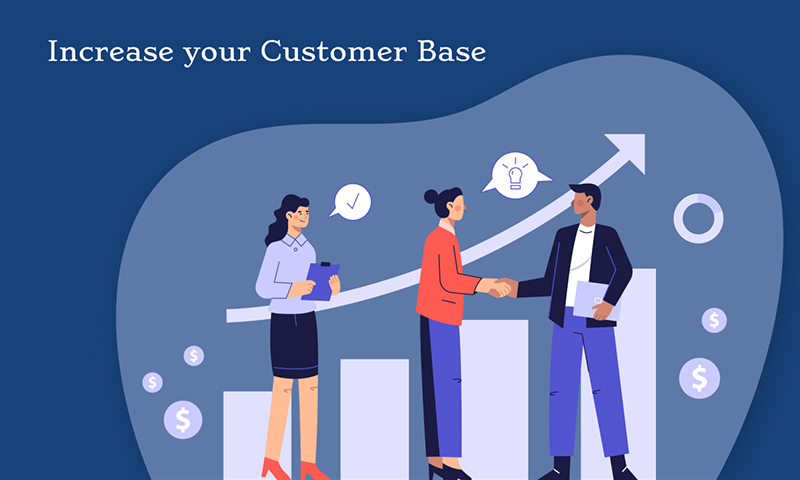Sidharth Jain, Proud Founder of GraffersID, Web and Mobile App Development Company based in India, helping startups who have the potential to make it big. Providing dedicated remote developers. Hire Nodejs developers in India, Trusted by start-ups in YC, Harvard, Google Incubation, BluChilli. He understands how to solve problems using technology and contributes his knowledge to the leading blogging sites.
Customer retention is critical whether you are a startup or a well-established organization. If you want your business to thrive you need to more focus on customer retention, yet many new businesses struggle to retain consumers with their products and services. Before they know it, client turnover has skyrocketed, they’re losing as many customers as they’re acquiring, and the company has imploded.
It’s a recurring trend with companies that don’t manage client retention early on – but why is that the case? Is it possible to avoid this client retention-related collapse syndrome?
Customer Retention at a High Level in Startups
Let’s start with a high-level evaluation of why startups struggle with client retention and loyalty. In general, there are two approaches to obtaining long-term paying customers:
- Client acquisition
- Customer retention
Customer acquisition entails spending in sales, marketing, and advertising to raise brand recognition and bring in more consumers.
On the other hand, client retention is all about ensuring that your current customer base is pleased and content with your product, so they continue to pay for it or purchase additional items.
Startups suffer from imbalance because they overspend on client acquisition while ignoring or underestimating the significance of customer retention. Their lack of investment in client retention results in a steady deterioration – and ultimate loss of consumers, sometimes to such an extent that recovery is almost impossible.

Why Is Customer Retention So Important?
Customer retention is concerned with retaining your current customers. More than that, it is about refining the customer experience to be readily disseminated to new consumers who are unfamiliar with your brand.
Advantages:
Longer Subscription Rates:
If your company operates on a subscription model, your customer retention strategy may assist you in ensuring that your customers remain subscribed to your service for as long as feasible. Even one more year of income per subscribing client may be a game-changer for your company. Ideally, you’ll be able to retain many of your clients for life.
More Purchases:
Customers who enjoy your retention tactics are more likely to buy from your company again. That might be adding a few more things to an online basket or returning to your shop for more purchases more often in the future. In any case, your company’s revenue will increase.
Increased Client Loyalty:
Even the most innovative companies face competition at some point. When your largest rivals appear and threaten your client base, you can rely on your customer retention plan; with the proper retention strategy in place, your consumers will be more firm and loyal to your brand. In other words, even if a great offer is on the table, they will be less likely to move to rivals.

Reviews and Testimonials:
When consumers are pleased with the service they received or have had an outstanding experience, they are more inclined to give positive feedback and write testimonials. These peeks inside your consumers’ minds, when combined, may persuade whole generations of new customers to test your brand.
Brand Evangelism:
Suppose you increase your customer retention strategy and go out of your way to provide excellent experiences for your customers. In that case, you may end up with consumers that are so loyal that they become evangelists. Your most ardent supporters will be so enthusiastic about your brand that they will gladly and proactively promote it to others. In other words, they become walking advertisements — as well as evidence that your company cares about its consumers.
The Attraction of New Customers
Those advantages should be appealing to every startup entrepreneur. So, why are so many experts ignoring it?
The Growth Mentality:
In most companies, the culture is centered on growth. Startup founders are frequently fascinated with the notion of scaling to enormous heights and becoming wealthy — and the easiest way to do it is to bring in new consumers. Of course, if you are too focused on expansion, you may become myopic — and lose out on counterbalancing that growth with client retention.
The Allure of Novelty:
Humans tend to overestimate the worth of novelty. Why see an old film for the hundredth time when you can view a fresh one? Whether they know it or not, most individuals in the startup industry instinctively overestimate the value of new clients while underestimating the worth of current ones simply because new ones are “new.”
Let’s face it: pitching and reporting value is difficult. It feels lovely to be able to report on consistent growth and new users. When you get to tell an investor that your business has had 50,000 new signups this month, it makes you enthusiastic about the company’s future – and will likely persuade your investor that you’re on the right road. However, these figures may exaggerate the growth trajectory since they do not consider whether those consumers stay around.

Why Is Customer Retention Neglected?
Overconfidence in the Product:
Your product’s strong growth potential does not ensure its ability to keep consumers. Too frequently, businesses believe that once someone tries their product or subscribes to their services, they would be so pleased that they will never want to leave. That may occur occasionally, but there is no excuse to cut corners on your client retention approach.
Underestimation of Value:
Some professionals do not understand how essential and effective a client retention strategy is. They’ve never managed a company that benefited from an effective customer retention strategy, and they’ve never done the math. They know that “more clients is better.”
Lack of Expertise:
It should be no surprise that if you don’t have someone on your team recommending you invest in client retention or showing you how to do so, the plan will be ignored. If you want to be successful in this area, you’ll need to employ someone – whether a full-time, in-house specialist or a consulting firm that can assist you with a range of services.
Lack of Imagination:
In certain instances, a company understands and appreciates the concept of customer retention, but they lack the creativity to devise tactics that will keep customers coming back. Some methods are apparent; for example, your intuition will tell you that providing excellent customer service would encourage consumers to stick with a particular brand. Others, on the other hand, require more thought and new thinking to be effective.
Complete Obliviousness to the Possibilities:
Could you come up with a plan on your own if you’d never heard about the significance of client retention? You would never officially follow the program unless you had a strong knowledge of the importance of client retention in the success of a company and the statistics linked to its quantitative value.
The Way to Increase Customer Retention
Fortunately, there are many possible strategies you may use on the road to increased client retention. To keep your customers enrolled, you may invest in a customer loyalty or incentives program. You can improve your client service.
You may update your product regularly and offer consumers new features and benefits. What matter is that you have a method for determining what is essential to your consumers – and then providing it to them regularly for as long as they are a client.
It may be thrilling to consider how your startup’s growth might skyrocket in a matter of months or even a matter of weeks. And it can accomplish just that. All of that expansion, though, will be for nothing if the new consumers you acquire wind up switching to a rival. Make sure you’re spending just as much – if not more – on client retention as you are on acquisition.


